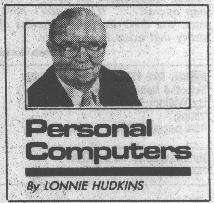



Developed by computer scientists at UB through funding by the US Postal Service, the new system is part of an effort to devise computerized tools that will greatly reduce the amount of time and money it takes to process mail according Ellen Goldbaum of the University News Bureau.
Because of their different sizes, styles and shapes, the letters and numbers in handwritten addresses have been traditional stumbling blocks for the optical scanners the Postal Service uses to read and sort mail.
But the UB system is the first optical character reader that can find and read ZIP codes on 75 percent of handwritten addresses. According to the News Bureau Systems currently in use reject 40 to 50 percent of all mail and more than 95 percent of the handwritten mail they scan.
The system which consists of an optical scanner and a work station approaches its tasks in steps.
First, it locates the address on a piece of mail. Next, it divides it into lines and then into parts of lines such as city, state and ZIP code. Then it tries to read the numbers in the address starting with the ZIP code and proceeding to the street number and even post office box number.
Sargur Srihari, Ph.D., UB professor of computer science and director of CEDAR explained that "the goal of all of this reading is for the computer to automatically imprint the mail piece with a bar code that will be read by subsequent automatic mail sorters either at the same post office or other post offices as it travels to its destination.
"The five-digit ZIP code identifies at least the destination post office." he said. "If the writer has included the ZIP+4 which is a nine-digit code, the computer can tell to what side of the street or what specific apartment building the letter is being sent."
If the sender has included only the five digit ZIP code on a letter destined for a private house or left it out entirely, the computer still can use the information that is shown and assign a bar code to it.
"The computer can make good guess what the street is, even though it can't read the actual street name." Srihari said.
He explained that because few streets in a particular city or town have building or house numbers with the same last two digits, the computer can scan its database for streets and start to narrow down the choices.
Srihari said that the current system takes less than two seconds to determine the ZIP code on each mail piece after it has been scanned. Through modifications and refinements, the researchers want to be able to process 12 letters each second.
Complete destination coding is now possible with the UB system on 25 percent of the handwritten mail pieces it scans. The UB researchers want to be able to encode 50 percent before 1994.
Srihari said the next hurdle is the actual reading of the names of cities, states and streets. He said that will be more complicated than reading of numbers.
"For each digit there are only 10 possibilities." he said. "but for each character there are 26 possibilities. Also, they can be either upper or lower case and they may be connected to each other."